The United Nations proclaimed May 22 The International Day for Biological Diversity (IDB) to raise awareness and increase understanding of the issues around biological diversity and its fundamental role for the planet and humanity.
But what exactly is biological diversity? Biological diversity, or in short biodiversity, is often understood in terms of an abundance of diverse plants and animals present in a specific region. However, biodiversity also includes genetic differences within species — e.g., varieties of crops — and the variety of interlinked ecosystems (lakes, forests, rivers, agricultural landscapes, etc.) giving shelter and allowing interaction between those who inhabit them (humans, plants, animals, insects, microorganisms, etc.). Biodiversity is a prerequisite for life, any loss of it, is a loss for everyone and a threat for the future.
This year’s theme is Our solutions are in nature, underlining how any activity we perform is always interconnected with mother earth. Today humanity faces an unprecedented number of ecological challenges (as the current coronavirus pandemic has made evident), but any solution we can imagine and formulate is inevitably found within the same domain: nature. And nature’s barometer is biodiversity. For example, a pathway to reduce climate shocks and increase resilience to climate change is landscape restoration, which in turn is highly correlated with biodiversity levels. Moreover, maintaining high levels of biological diversity offers protection from spillovers of diseases from animals to humans (i.e. zoonoses) such as the current one we are living through, as it has been proven that biodiversity loss is a sufficient (but not necessary) condition for the increase of zoonoes.
The UN has devoted the full week 18-22 May 2020 to celebrate biodiversity through 3 themes: importance of knowledge and science, importance of biodiversity itself and a call to action for the future.
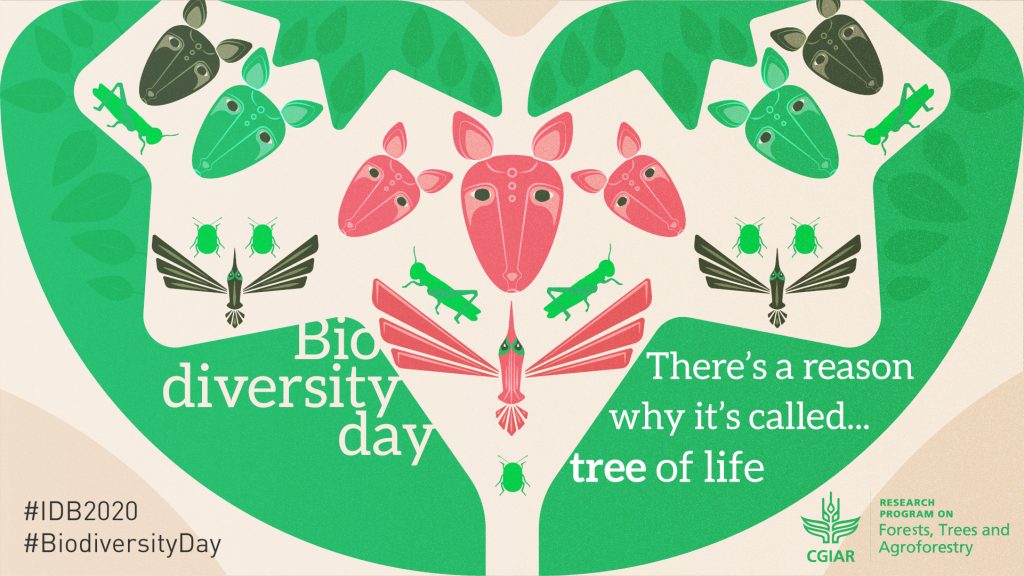
2020, dubbed the biodiversity super year, is a pivotal moment to re-think our relationship with nature. This lock-down time should push us to reformulate a new normal that should focus on resilience and a common approach towards the restoration and conservation of biodiversity, inverting the disastrous trend of biodiversity loss that we have been accumulating over many deacades.
2020 will also witness the end of the 2011-2020 Strategic Plan on Biodiversity and its 20 Aichi Biodiversity Targets, as well as the UN Decade on Biodiversity, leading to the transitional phase for the start of other new pivotal biodiversity-related decades for the period 2021-2030: the UN Decade of Ocean Science for Sustainable Development and the UN Decade on Ecosystem Restoration; and the UN Biodiversity Summit, in order to highlight the urgency of action at the highest levels in support of a post-2020 global biodiversity framework. FTA hopes that we will be indeed able to see a positive change in the coming years.
Role of trees and FTA’s work
Trees, forests and agroforestry have an enormous role to play in preserving and enhancing biodiversity and improving human and animal life. To underline this, FTA has set the safeguarding and conservation of biodiversity as one of its main priorities. In the occasion of this day we are happy to illustrate some of the activities that our partners are carrying out in this domain.
Biodiversity in tropical forests
Our lead partner CIFOR has a specific landing page for biodiversity which gathers all the most recent publications dealing with this important topic, highlighting the extreme potential for the unknown and the strong link between forests and food security and nutrition.
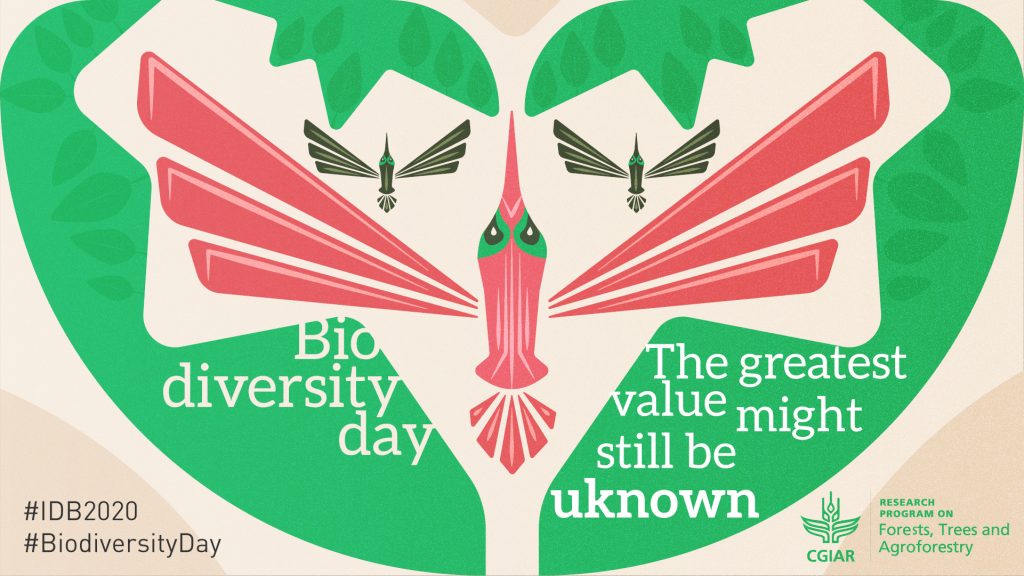
Recent publications include:
The Influence of Forests on Freshwater Fish in the Tropics: A Systematic Review highlighting that the majority of studies provided evidence that fish diversity was higher where there was more forest cover; this was related to the greater heterogeneity of resources in forested environments that could support a wider range of species. Read a recent blog about this.
Systematic review on impact of oil palm on biodiversity – a study focusing on the impacts on species richness, abundance (total number of individuals or occurrences), community composition, and ecosystem functions related to species richness and community composition.
Some recent online blogs also put the spotlight on the work CIFOR has been carrying out on biodiversity. We highlight this interesting piece on the extreme diversity of ecological systems present in Borneo and the large scale vegetation ecological maps crucial to manage all this biodiversity at landscape level.
Biodiversity and the Trees theme at ICRAF
Our partner ICRAF develops a number of interesting studies that are strongly linked with the analysis of biodiverse elements, as they supporting biodiversity-based livelihood strategies, requiring them to characterize patterns of biodiversity in agricultural landscapes and how these are changing as farming systems and climate alter. For example: they conduct tree species diversity inventories in farmland, considering whether the trees found are of local origin or are exotic (are introduced from elsewhere), and how common individual species are in farm landscapes.
African Orphan Crops Consortium
ICRAF has just launched the new website of the African Orphan Crop Consortium which includes a fully searchable database of 101 different crops identified as important for nutrition and livelihoods in a participatory manner by Africa’s scientists, development practitioners, consumers, and producers. Together they provide a wide range of nutritious foods, including edible roots, leaves, seeds and fruit, and encompass plants that are part of Africa’s historically neglected bounty of biodiversity. The idea is to use advanced genomic methods to support genetic improvement. These plants form a unique biological resource for crop development, but the window of opportunity to realise their value is limited as they are threatened by the relentless simplification of farming landscapes and forest loss.
This work has been featured in Nature Genomics
Vegetation Map4Africa
In order to promote tree species’ biodiversity effectively, information on what trees to plant where and for what purpose is required. ICRAF develops maps, databases and smartphone apps to better allow this. The high-resolution vegetationmap4africa (www.vegetationmap4africa.org/), for example, supports the selection of suitable indigenous tree species to plant in particular ecological zones in eastern Africa through the Useful Tree Species for Eastern Africa selection tool, which uses Google Earth to explore geographic locations and present species’ options.
Bamboo and rattan for biodiversity
Lack of bamboo planting material of particular species in required quantity and quality has always been a challenge due to the flowering nature of bamboo and lack of standardized vegetative propagation methods and selection protocols. INBAR’s previous and current development projects in Africa have set up several nurseries to scale up bamboo planting material production in Africa and Latin America. Moreover, INBAR is also undertaking ex-situ genetic conservation activities including setting up of bamboo setums and research plots. These activities are aimed at enabling large-scale bamboo based landscape restoration activities.
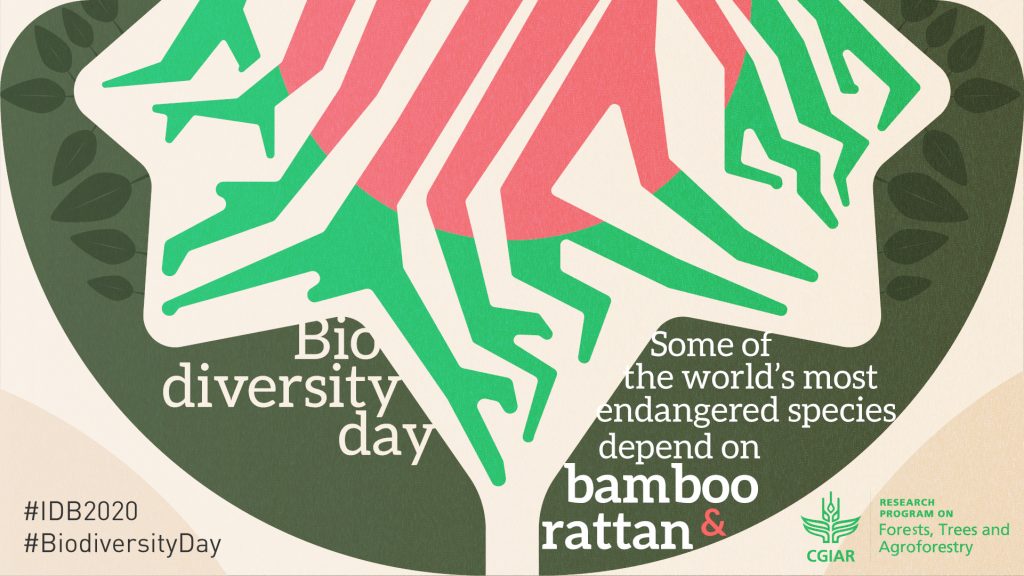
Read also: INBAR’s statement on International Day for Biological Diversity 2020.
Currently our partner INBAR is developing a study to obtain a deeper understanding of conservation of bamboo genetic resources in theory and practice. The study will examine the growth and performance of indigenous and introduced bamboo species, the modification of local biodiversity. The aim is to select the most appropriate species for expansion as well as developing seed sourcing and selection.
A comprehensive report on bamboo seed sourcing/selection and mechanisms for identification of superior bamboo clumps for expanding vegetative propagation will be the outcome of this research.
Building a healthy future
We highlight here two recent publications from our partner the Alliance of Bioversity and CIAT, one on mapping tree species vulnerability to multiple threats as a guide to restoration and conservation of tropical dry forests which was also featured as cover story for Global Change Biology. The other article illustrates the characterization of the genetic diversity of 21 wild and cultivated populations of the common walnut (Juglans regia L.) across Kyrgyzstan, Tajikistan and Uzbekistan. A complete threat assessment was performed evaluating the short-term threats from overexploitation, overgrazing, landslides, and fragmentation as well as long-term threats from climate change.
The Alliance also produced a series of blogs discussing the importance of biodiversity, a first one specifically on #BiodiversityDay2020, then on the threat mapping work and also a recent D4R workshop.
Read more: statement by the Alliance on the International Day of Forests.
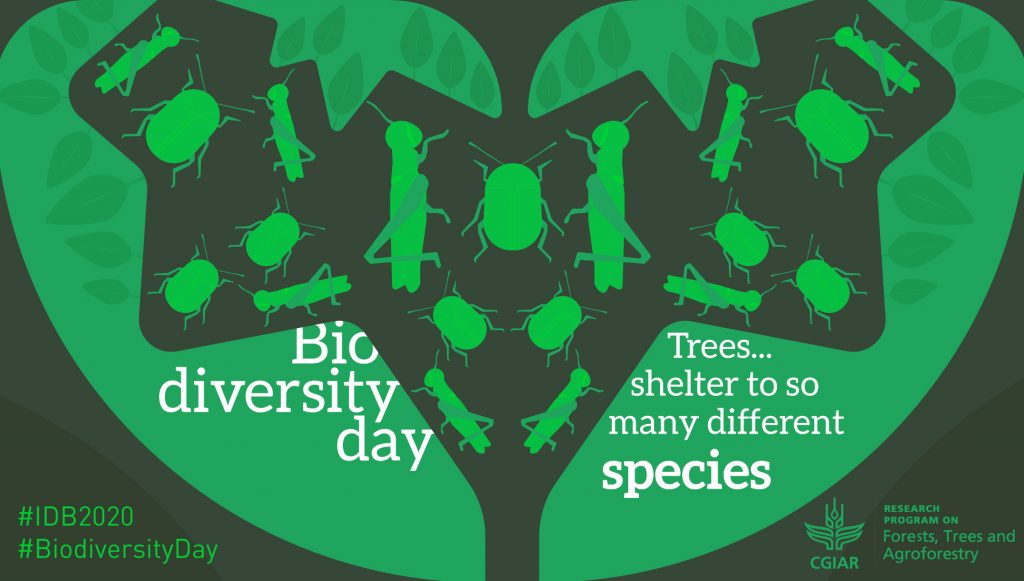
Sentinel Landscapes, solutions for biodiversity improvements
Our partner CATIE just recently released a report on the Nicaragua-Honduras Sentinel Landscape.
The report shows how agroforestry is a sustainable alternative for rural development, and it is a conspicuous beneficial element in the agricultural landscape. Trees on farms can contribute to subsistence farmers’ strategies to face climatic or socioeconomic eventualities and can supply important goods to meet farmers’ demands.
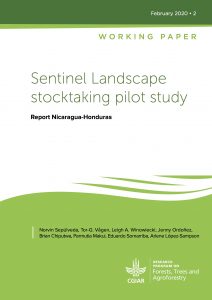
We hope that you will find this information is useful and interesting!
Feel free to join our newsletter for updates on our work
Finally, we are happy to share with you A Hymn to Biodiversity an a cappella musical composition inspired and dedicated to biodiversity by composer David Rain, who contacted us through our facebook page. Well done David, it’s beautiful!
May it inspire everyone to love and protect our biodiverse nature.
This article was produced by the CGIAR Research Program on Forests, Trees and Agroforestry (FTA). FTA is the world’s largest research for development program to enhance the role of forests, trees and agroforestry in sustainable development and food security and to address climate change. CIFOR leads FTA in partnership with Bioversity International, CATIE, CIRAD, INBAR, ICRAF and TBI. FTA’s work is supported by the CGIAR Trust Fund.











